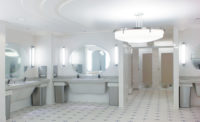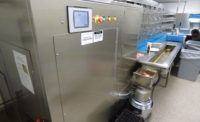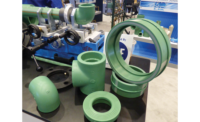The Environmental Protection Agency’s WaterSense program has hit plenty of major milestones since it launched in June 2006.
These milestones include, according to the EPA’s website:
-
Saving a cumulative of 1.5 trillion gallons of water;
-
Saving more than $32.6 billion in water and energy bills;
-
Reductions of 212 billion kWh of electricity and 78 million metric tons of carbon dioxide.
Products that achieve WaterSense-certification are 20% more water-efficient and perform as well as or better than industry standard models, the organization states. As of press time, there were more than 1,600 models of showerheads, 1,900 models of tank-type toilets, 6,800 faucet models and 150 models of weather-based irrigation controls that were independently-certified to meet the EPA’s criteria for water efficiency and performance.
Even so, manufacturers that develop WaterSense-certified products want to keep pressing the program to its customers. WaterSense is a voluntary program and not federally funded by the U.S. government, but there is hope that’ll be the case in the future.
“It’s catching traction,” T&S Brass Engineering Manager Jeff Baldwin says. “We’re trying to get the program fully recognized and funded. Hopefully, more states will look to adopt WaterSense and if they get federal funding, that will go a long way.”
Baldwin says T&S Brass products are popular in the food-service market and the company has seen its WaterSense-certified pre-rinse spray valve have strong success. Still, the restaurant, hospitality and healthcare building owners that utilize WaterSense-certified products are concerned that the drive to save the most water could have adverse effects.
“They’re concerned about safety and using water at the right temperature,” Baldwin notes. “As we drive the flow rates lower, the engineers designing the applications and the building owners know they have to do something different behind the wall than before. Health and human safety have to come first.”
With its ultra-low spray valve, T&S Brass worked with the WaterSense program and developed a new performance-specific test. It was a process that took a lot of work, but Baldwin stresses the partnership between the manufacturer and WaterSense is important.
“It’s very similar to the showerhead test,” he says. “It looks at spray force. Unlike most government agencies, WaterSense has been agreeable to work with on solutions. They listen to thoughts and ideas. Sometimes you have to look at (results) that come back ugly and move forward.”
American Standard and its parent company LIXIL are seeing the commercial WaterSense-certified flushometers – particularly with its Afwall Millennium and Madera bowls and flush valves – market gaining strength. The company does not see a slowdown in the WaterSense program anytime soon.
“We expect to continue to see demand for WaterSense-certified products that use the least amount of water without sacrificing performance,” says James Walsh, vice president of chinaware and commercial products for LIXIL Water Technologies.
Gerber Plumbing Fixtures and Danze have a variety of WaterSense-certified products with more on the way in 2017. Currently, Gerber’s Ultra Flush 1.1-gpf toilets are strong in the market, according to Lovin Saini, a senior product manager with Gerber Plumbing Fixtures and Danze. The company also features WaterSense-certified faucets and showers that perform below the program’s requirements.
Saini says WaterSense’s future is clear – it is growing.
“To us, the adoption of WaterSense and water-saving products is going to continue,” he says. “We already see more demand for toilets that use less water in both commercial restroom applications, as well as multifamily and hospitality. Current research shows 30% of the U.S. population resides in WaterSense or low-flow code regions. More states are expected to adopt those codes.”
Saini continues: “With lower flow and WaterSense adoption rising, professionals should focus more on the drain-line carry of chosen products to ensure full water savings efficiency realization from their projects. A minimum of 50 ft. carry is best for commercial applications, which is 20% above the minimum code.”
The retrofit market has been a strong one for Niagara Conservation’s WaterSense-certified products because of the life span of the product. The manufacturer states it has equipped its toilets with Stealth Technology that features a patented hydraulic flush that provides a quiet flush at half the rate of the industry standard.
“There are still millions of ‘legacy toilets’ out in the marketplace that waste water in excess of 3.5 or 5 gpf,” Niagara Conservation Product Engineer Kevin Kennedy says. “We urge that those products be switched out. With improved performance, the return on investment is extremely short. More importantly, we only have so much potable water available for use. Making a smarter choice now will have significant long-term benefits decades into the future.”
Kennedy and Niagara see WaterSense products becoming more prominent outside the bath-and-kitchen realm.
“It continues to expand into other products such as landscape irrigation controllers,” he says. “This helps further the cause of saving our most precious natural resource – water.”
This article was originally titled “Happy anniversary” in the November 2016 print edition of PM Engineer.





